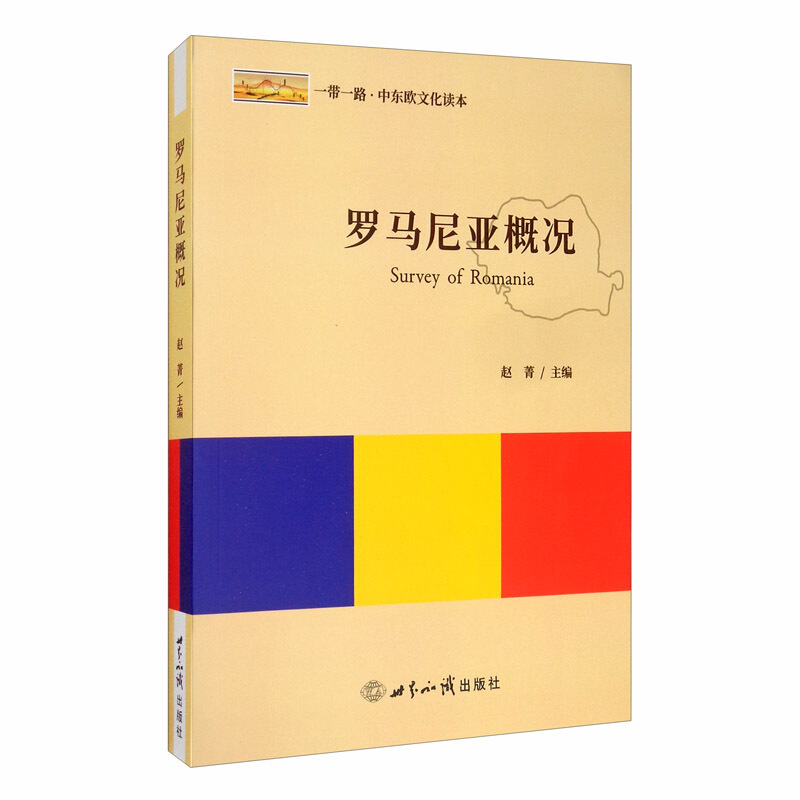- ISBN:9787501262007
- 装帧:一般胶版纸
- 册数:暂无
- 重量:暂无
- 开本:16开
- 页数:280
- 出版时间:2019-03-01
- 条形码:9787501262007 ; 978-7-5012-6200-7
内容简介
这是一套由北京市第二外国语大学英语学院组织编写“一带一路”沿线国文化书系之一。其中包括波兰、捷克、斯洛伐克、匈牙利、斯洛文尼亚、克罗地亚、罗马尼亚、保加利亚、塞尔维亚、黑山、马其顿、波黑、阿尔巴尼亚、爱沙尼亚、立陶宛、拉脱维亚共16个成员国。各册十章左右,字数约10-15万字,分别按地理(包括主要城市介绍、旅游资源,如世界文化遗产等的介绍)、历史、语言、政治、经济、教育、文学、音乐、舞蹈、绘画、体育、习俗、节庆活动等内容编排,并配有高清图片。
目录
Chapter 2 History
Chapter 3 Climate and Environment
Chapter 4 Culture and Customs
Chapter 5 SocialLife
Chapter 6 Government and Politics
Chapter 7 Economy and Trade
Chapter 8 Transportation and Commu:cucations
Chapter 9 Education
Chapter 10 Religion
Chapter 11 Sports and Outdoor Activities
Chapter 12 Entertainment
Chapter 13 Current Issues and Challenges
节选
The reign of Stephen the Great in Moldavia(1457-1504) was one of the high points for Romanian ecclesiastical architecture.He built more than 30 churches and monasteries, many of which were in southern Bucovina and subsequently painted on their exterior as well as interior walls.The "painted monasteries" of Moldovita, Sucevita and Voronet are renowned for the brilliant colours and striking images of their exterior frescoes portraying Genesis, the Tree of Jesse, the Last Judgment and the siege of Constantinople.Moldavian church architecture experienced another great period in the 17th century with the construction of the monasteries of Dragomima(1609) and Trei lerarhi(1639),notable for their omate lacework facades.During the 17th and 18th centuries,the closer relations between the two Danubian Principalities were reflected in greater similarity oftheir church architecture.Due to the unsettled conditions in the Danubian Principalities, moreimportant secular buildings survived from earlier times in Transylvania.In the Gothic style, these include the town hall in Sibiu and the castles in Hunedoara(of which a partial replica exists in the Budapest city park since the late 19th century) and Bran in the Carpathians south of Brasov.With its angular shape and prominence along the highway to Bucharest, Castle Bran is sometimes referred to as "Dracula's Castle" despite its tenuous connection with Vlad the Impaler.Renaissance monuments in Transylvania include private houses in Cluj and Sibiu and the royal fortress in the middle of the southern Transylvanian town of Fagaras.Sibiu, whose Saxon inhabitants have largely emigrated, is architecturally the largest German town in Southeastem Europe, with a partially intact city wall and characteristic window vents known as roof eyes(Dachaugen)on the pitched roofs of older buildings.In the Principalities, the major 16th-century fortress of Piatra Neamt in Moldavia has survived, but there are only ruins from the Walachian princely courts in Targoviste and Bucharest.There were regional styles in the domestic architecture of the common people.The porches in Brancovenesc buildings may have arisen in imitation of Romanian homes.At the end of the 19th century, professional architects began to take more notice of popular styles and attempted a synthesis of folk and modern architecture in their work.The leading representative of this tendency in Romania was Ion Mincu, who built various restaurants and private homes in Bucharest and restored the Stavropoleos Church in 1906.The Transylvania Hungarian Karoly Kos studied in Budapest, where he became an advocate of a style that resembled Mincu's in its objectives but sought to revive Hungarian regional styles.His most notable building is the Szekely National Museum in Sfantu Gheorghe.The Palace of Culture in Targu Mures is another example of Hungarian folk revival architecture, whereas the National Theater in Cluj is an example of Habsburg art nouveau.Many Bucharest houses and even apartment buildings of the interwar period are examples of these styles.After 1920, Kos and the Bucharest sociologist Dimitrie Gusti worked independently for the preservation of folk architecture.Kos published a highly regarded collection of meticulous drawings of Transylvanian village architecture in 1929, while in1936 Gusti founded the remarkable Village Museum in Bucharest that is a collection of village houses and wooden churches from all over the country.It was the third open-air museum of its type in Europe.The Museum of the Romanian Peasant arose from earlier institutions founded in 1875 and 1906 -1912.It was associated with the Village Museum after 1978 but became an independent institution once more in 1990. ……
作者简介
赵菁,北京第二外国语学院英语学院副教授,英语语言及文学硕士,2015-2017年留学美国阿巴拉契亚州立大学。研究方向:教育学、跨文化研究、翻译研究。近年来,在国内各类学术刊物发表论文10余篇、主编教材3部、翻译著作侣部、参与国家及市级项目2项。
-

吾国与吾民-精装典藏新善本
¥15.7¥28.0 -

中国读本:经典版
¥17.7¥46.0 -

隔间:办公室进化史
¥36.5¥58.0 -

茶经(黑白版)
¥10.1¥48.0 -

经典常谈
¥4.3¥14.8 -

皇上吃什么-清宫四季饮食风物
¥53.0¥68.0 -

唐代服饰文化研究
¥24.4¥58.0 -

痴愚百科全书
¥14.7¥49.0 -

我所不理解的生活-纪念珍藏版
¥14.9¥29.8 -

大家小书:孔子的故事(平装)
¥9.6¥25.0 -

溥仪偷运国宝
¥6.7¥26.0 -

世界神秘现象大全-超值版
¥7.2¥28.8 -

东瀛印象记
¥12.3¥35.0 -

孔子和他的弟子们
¥16.0¥25.0 -

我的童年在台湾
¥9.6¥32.0 -

地理的故事
¥12.7¥47.0 -

文史足徵录
¥16.2¥49.0 -

北欧神话
¥24.9¥58.0 -

厕神:厕所的文明史
¥30.4¥39.0 -

庄子
¥9.0¥28.0













